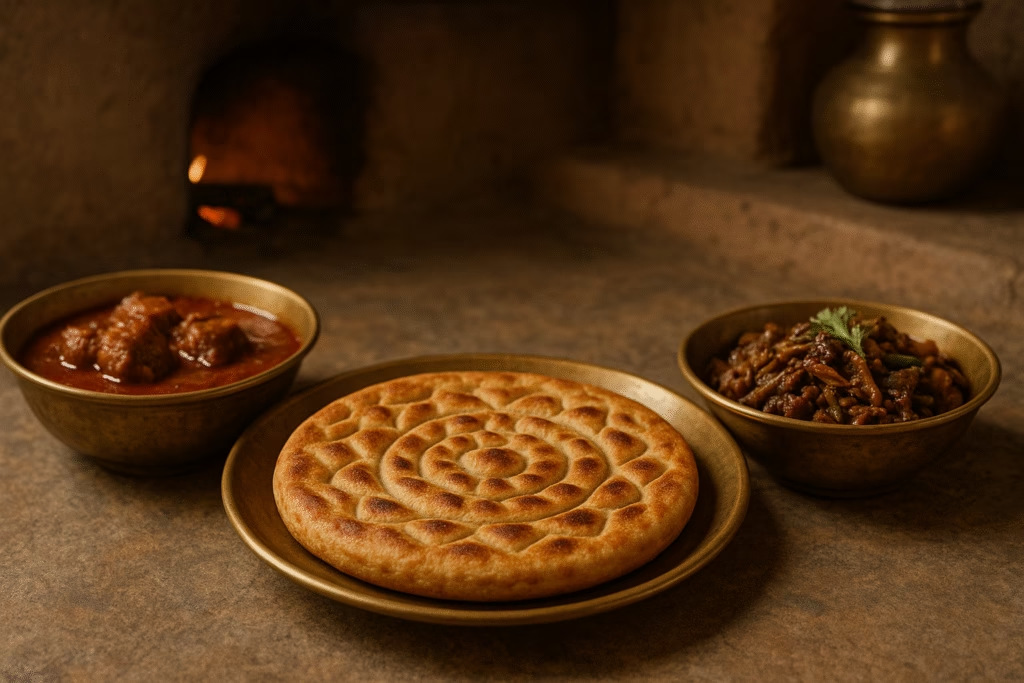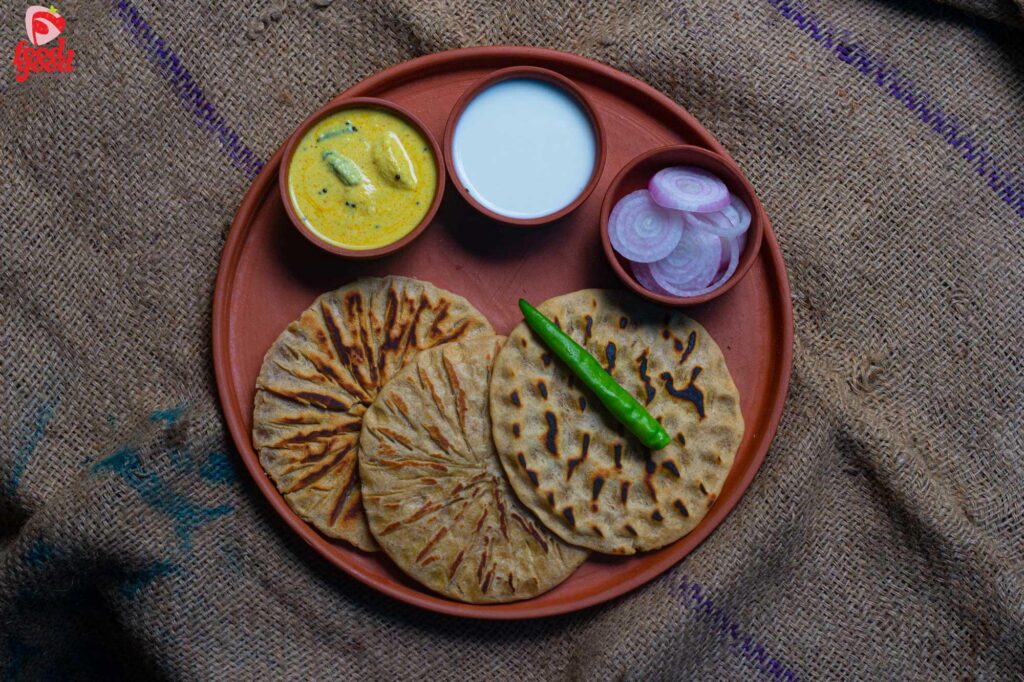Some recipes come with a sense of ceremony. Khoba Roti is one of them. It’s not just something you cook-it’s something you shape, imprint, and slowly bring to life, almost like molding clay. I remember the first time I saw it being made, the cook’s hands were moving in a rhythm I didn’t understand at the time. Pinch, turn, pinch again. A silent pattern unfolding on a thick disc of dough. The roti was heavy, solid, almost sculptural. I had never seen anything like it.
Later, I learned that khoba means indentation, and those pinches weren’t just for show. They give the roti character, help it cook evenly, and more importantly, hold onto the ghee that gets spooned over at the end. And let’s be honest-there’s something deeply satisfying about watching melted ghee settle into those little valleys like golden pools.
Making Khoba Roti at home feels like stepping back in time. You knead the dough, keep it simple-just atta, salt, a bit of oil or ghee, and warm water. Once it’s smooth and ready, you shape it thick. Thicker than any regular chapati. That’s when the meditative part begins. Thumb and fingers pinch the surface in small, neat motions. You don’t have to be perfect. In fact, the charm is in the imperfection. Every roti looks slightly different, and that’s what makes it yours.

Cooking it is slow work. No rushing here. Flip it gently, roast it carefully, give it time to develop a crust. The smell changes as it cooks-nutty, earthy, with a hint of something ancient. It’s a smell that makes you want to stand right there, waiting, until it’s done. When you finally smear ghee on top, it’s like the roti exhales. As if it was waiting for that moment too.
People often ask how to eat it. The answer is: however you like. Traditionally it’s served with fiery meat dishes like Lal Maas, or with tangy, spiced vegetables like Ker Sangri. But honestly, I’ve eaten it with dal, with curd, even with a sprinkle of jaggery. It holds up beautifully, absorbs flavors, and leaves you full in the best way. It’s food that grounds you.
What I love most about Khoba Roti is that it doesn’t pretend to be delicate or modern. It’s hearty, deliberate, and full of quiet pride. You can feel the desert in it-the patience, the resilience, the beauty of making something substantial out of very little.
If you’ve never made it before, don’t worry about getting it right the first time. Just start. Pinch, turn, pinch again. Let your hands learn the rhythm. By the end, you’ll not only have a beautiful roti-you’ll have made something with story, shape, and soul.
Khoba Roti
Description
Khoba roti is a Rajasthan delicacy . Its simple to make and taste like biscuit without sugar. No joking, you can eat it as a Breakfast, or have it with tea or anytime you wanted to eat without guilt. Here we are making basic khoba roti, If you wish you can add some spices with the dough and make it special .
Ingredients
Instructions
-
Khoba Roti is a traditional Rajasthani delicacy. You can enjoy it as a hearty breakfast, with a cup of tea, or simply whenever you crave a guilt-free, wholesome meal.
-
In a large bowl, take 3 cups of wheat flour.
-
Add salt and mix well.
-
Gradually add ½ cup of melted ghee, mixing it into the flour using your hands.
-
Make sure the flour is well coated with ghee. It may appear crumbly, but when you press some flour in your hand, it should hold its shape.
-
Add enough water and knead into a soft, smooth dough.
-
Rub some ghee over the dough, cover it, and let it rest for 30 minutes.
-
After resting, knead the dough once more and divide it into 3 to 4 equal portions.
-
Roll each portion into a thick roti, about ¼ inch thick.
-
Make shallow slashes with a knife on one side of the roti.
-
Using your fingers, knife, or tweezers, pinch the surface to create decorative patterns. Traditionally, this is done with fingers.
-
Heat a tawa and cook the roti on the slashed side for 1 minute—just enough to seal the base.
-
Now you can choose one of the following three cooking methods:
Method 1 (Tawa): Add a teaspoon of ghee to a hot tawa. Place the roti on it and pour a little more ghee on top. Cook both sides on medium heat until crisp and golden.
Method 2 (Oven): Preheat your oven to 180°C (350°F). Place the roti on a baking sheet and bake for 25–30 minutes, or until golden and crisp.
Method 3 (Flame): Cook the roti directly over flame, turning both sides until done and crispy.
-
Once cooked, drizzle a teaspoon of ghee over the top of the roti.
-
Khoba Roti is ready. Serve it hot with dal, curd, or any curry of your choice.


